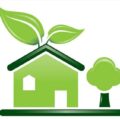Here at SimplyLED we are passionate about lowering energy consumption and using green energies.
From using low energy LED lighting in our own home and offices, to the use of DPD as our courier who now offer a carbon neutral service, we try our best to be as green as possible. We talk a lot about the small changes you can make at home to lower your energy consumption, but what are some of the bigger ways to produce electricity without having to burn diminishing stocks of fossil fuels and producing C02? There is an ever growing number of renewable green energies being developed, so we decided to make things a bit simpler, and look at some of the most popular green energy sources.
Wind Farms
Wind energy is being harnessed to produce power with the use of wind turbines, in what are known as wind farms. You may see the odd wind turbine placed in a field or by a building giving power for one specific purpose, but energy companies are creating huge farms of these turbines to harness even more power. These are often seen in elevated areas, high up on hills or where there are large windy clearing such as fields or at sea. In the UK today, there are 4832 wind turbines in place. One single turbine can produce enough electricity to supply over 1400 households! Although they depend on our ever changing weather, wind farms generally generate electricity around 75-80% of the time.
Hydro-Electric Power
Hydro-electric is power produced from falling and moving water. Waters flows through a turbine, which works a generator that generates electricity. Dams are built where water naturally occurs, such as rivers or lakes to create reservoirs. Holding large amounts of water at a height creates potential gravitational energy, allowing for more energy to be produced when it falls through the turbines. It is a renewable energy as no sources are used up or lost in the process, the water continues its journey after passing through the turbines. In terms of energy production is it highly efficient and can be controlled depending on current demand. At times of high demand more water is passed through, generating more energy whilst at time of lower demand this can be reduced. Approximately 20% of the worlds power is generated from Hydro-power.
Solar Power
Power can be harnessed/ generated through the use of solar panels, which are made up of multiple layers of silicone. When light shines through these layers, an electrical current is created which is stored in cells and used as electricity. Solar panels are very popular in domestic energy production, you will often see them on the roofs of houses. They are a great way to cut your electricity bills and help your carbon footprint. According to the Energy Savings Trust a home system of 3.5kWp can produce enough electricity to cover about 3/4s of a typical household electricity needs. You could have solar panels installed at your home as part of the Green Deal, to help cover initial costs involved.
Tidal power
Tidal power is a less commonly used, renewable energy source. This is due to a number of different reasons, including their limited suitable locations of use and the impact they can have on the immediate Eco structure. The most common type of tidal power used is tidal barrages. This is where huge dams are placed across estuaries, with tunnels for the water to flow through. Using tides and this technology means the barrages work just like the hydro-power stations, generating electricity. Whilst this technology relies on naturally occurring tides, it does tend to have an impact on the local habitat and this of course is less desirable. At the moment, tidal power is still being tested and we continue to discus whether the huge installation costs, combined with the negative environmental impact are outweighed by the potential energy that would be created.
Renewable energies will help to give us a brighter future. If we could all use more renewable power in the future and low power consumption products such as LED lighting we would use huge amounts less of grid electricity generated from burning fossil fuels. This would lead to a cleaner environment with long term prospects without using up valuable and limited supplies.
Date: July 3, 2013
Tags: announcements environmental
Here at SimplyLED we are passionate about lowering energy consumption and using green energies.








